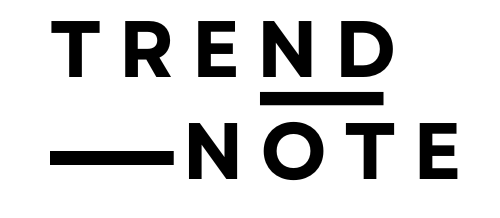In 2025, the integration of artificial intelligence (AI), automation, and smart technologies is reshaping the way we work and live. These advancements promise to streamline tasks, enhance productivity, and provide employees with greater control over their schedules. However, as work becomes more flexible and connected, the boundaries between professional and personal life blur, raising concerns about overwork and burnout. This article explores how emerging technologies are influencing work-life balance, highlighting both the opportunities and challenges they present.
I. AI and Automation: Redefining Productivity and Time Management
Leveraging AI for Enhanced Efficiency and Work-Life Balance
AI and automation are revolutionizing workplaces by automating repetitive tasks, simplifying processes, and improving decision-making. This leads to reduced stress, increased productivity, and a better work-life balance for employees.
- Hyperautomation in Workplaces: The widespread adoption of AI and robotics is automating repetitive tasks, allowing employees to focus on more meaningful work and personal activities.
- AI-Powered Productivity Tools: Platforms like Monday.com, Trello, and Asana utilize AI algorithms to optimize workflows, manage schedules, and reduce workloads, granting employees greater control over their time.
- Generative AI Assistants: Advanced AI assistants and digital twins are emerging to handle routine tasks, further freeing up time for employees to engage in creative and personal pursuits.
Supporting Data:
- A Salesforce survey found that 89% of employees felt automation made their jobs more satisfying, and 91% reported it improved their work-life balance.
Source: Salesforce
II. The Evolution of Remote Work: Flexibility Through Technology
Remote Work 2.0: AI-Driven Flexibility and Autonomy
AI is transforming the landscape of remote work, empowering us with greater flexibility and control over our tasks, and enabling us to work smarter, not harder.
- AI Integration in Remote Work: AI is enhancing remote work by automating scheduling, project management, and communication, leading to more personalized and efficient work experiences.
- Elimination of Commutes: Advancements in video conferencing and collaboration tools have made it easier for employees to work from anywhere, reducing commute times and allowing better integration of work and personal responsibilities.
- Rise of the Gig Economy: AI enables greater flexibility for freelancers and gig workers, allowing them to manage multiple jobs and maintain a healthier work-life balance.
Supporting Data:
- A report by McKinsey highlights that generative AI has the potential to automate 60-70% of employees’ routine tasks, making remote work more efficient.
Source: McKinsey
III. Enhancing Communication and Collaboration Through AI
Smarter Communication Tools for Better Work-Life Integration
In today’s fast-paced work environment, artificial intelligence is revolutionizing the way teams communicate, fostering greater efficiency and promoting a healthier work-life balance. By automating routine tasks and enhancing interactions, AI tools empower team members to focus on meaningful collaboration and reduce the time spent on administrative duties.
- AI-Enhanced Communication Platforms: Tools like Slack, Microsoft Teams, and Zoom are incorporating AI features such as automatic transcription and smart meeting summaries to improve communication and reduce time spent on administrative tasks.
- Cloud-Based Collaboration: Services like Google Drive and Microsoft OneDrive facilitate real-time collaboration, allowing teams to work together seamlessly regardless of location, thus supporting flexible work arrangements.
- Reduction of Information Overload: AI helps filter and prioritize information, minimizing distractions and enabling employees to focus on critical tasks, thereby improving overall efficiency and work-life balance.
IV. Wellness and Health: AI’s Role in Employee Well-Being
Promoting Healthier Lifestyles Through Technology
AI-powered wellness platforms are personalizing health support, offering tailored strategies for stress management and mental well-being.
- Wearable Wellness Devices: AI-powered wearables monitor health metrics, encourage physical activity, and prompt regular breaks, contributing to improved physical and mental well-being.
- Wellness Apps and Telehealth: Applications offering fitness tracking, meditation, and virtual healthcare services provide employees with accessible tools to manage stress and maintain health.
- Mental Health Monitoring: AI-integrated platforms can detect signs of burnout or stress, recommending timely interventions to help employees maintain a healthier work-life balance.
Supporting Data:
- Companies are now leveraging real-time data from wearables to track employee activity, monitor stress levels, and provide instant feedback.
Source: gopivot
V. Managing Boundaries in a Digitally Connected World
Strategies for Maintaining Work-Life Separation
Technology will facilitate flexible scheduling and work arrangements — such as job sharing, compressed workweeks, and flextime — which improve work-life balance by allowing employees to adjust their schedules to meet personal commitments. However, the very technologies that facilitate flexibility can also make it challenging to disengage from work.
- Technostress Awareness: The constant connectivity enabled by technology can lead to technostress, characterized by feelings of being overwhelmed by digital demands. Employees often feel compelled to remain constantly connected, leading to blurred boundaries between work and personal life.
- Digital Detox Practices: Intentional breaks from digital devices and online communication, known as digital detoxes, are gaining popularity as a means to restore balance and reduce stress.
- Organizational Policies: To address technostress employers are increasingly implementing policies that support work-life balance, such as flexible scheduling and encouraging digital detox practices.
Supporting Data:
- Studies suggest that digital detox interventions can effectively mitigate the adverse impacts of technology on work-life balance by promoting psychological detachment from work and enhancing overall well-being.
Source: PubMed
Conclusion
As AI and smart technologies continue to evolve, they offer promising avenues for enhancing work-life balance by automating tasks, providing flexible work options, and supporting employee well-being. However, it’s crucial to remain vigilant about the potential downsides, such as technostress and blurred boundaries between work and personal life. By adopting mindful strategies and organizational policies that prioritize employee health and balance, we can harness the benefits of technology while mitigating its challenges.
Are you ready to embrace the future of work? Explore how AI and smart technologies can enhance your work-life balance by leveraging the tools and strategies discussed in this article. Stay informed, stay balanced, and take control of your professional and personal life in 2025 and beyond.
